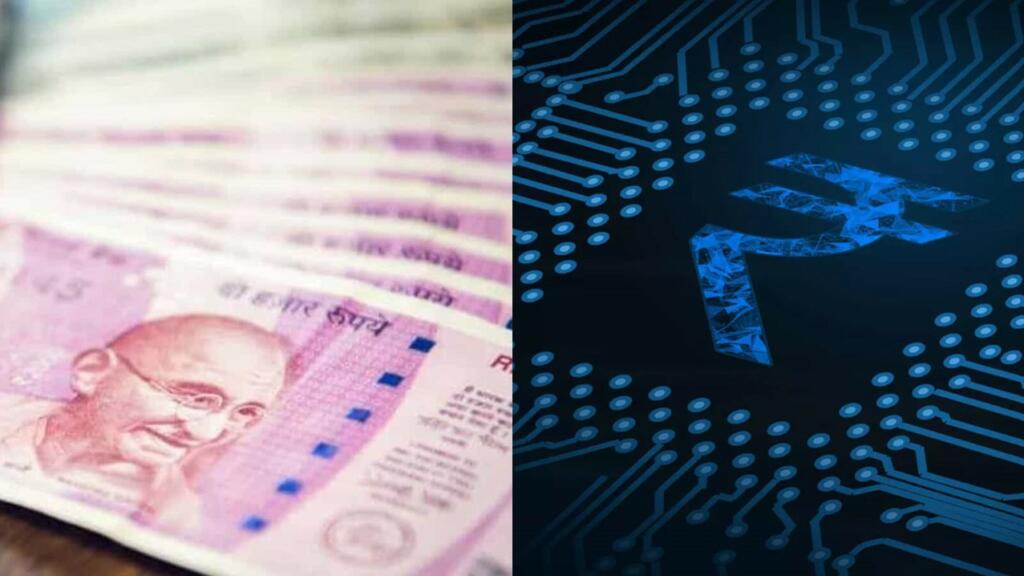So, India is set to become one of the 10 nations in the world to have its official digital currency. If you are watching news channels, your mind must have got confused about relatively new technology. Here we will collate everything in short and elaborate on the positive changes brought in by the digital rupee.
Budget 2022 became one of the most remarkable budgets in Indian history. In her Budget speech, Finance Minister Nirmala Sitharaman made an official announcement for India’s foray into digital money. India is launching its own digital currency. Here are key features of India’s own Central Bank Digital Currency (CBDC).
Reduced cost
Currently, the paper currency you use is not free. For every Rs 500 note you use, it costs the government Rs 2.94 to print it. Similarly, for printing a note of Rs 2000, the government spends Rs 3.54. In 2019, the Government had to spend a total amount of Rs 80 billion to print notes. Add to that the cost of supplying it to the whole of the country.
Read more: India’s own digital currency is here
Digital currency will bring down this cost. Digital platforms in general cost much less than real life infrastructures for printing money. Moreover, compared to paper currency, it has a negligible cost of supplying to the whole country. The government will just mine the currency and will release it in a digital ledger and the rest will be taken care of by already built software infrastructure.
You won’t need banks
Yes, that’s true. Currently, when you transfer Indian rupees online, you are basically transferring it from your bank account to the bank account of your friend/neighbour/shopkeeper. The digital rupee will be a remarkable departure in that respect.
Just like you handle cash to someone, you will be transferring digital rupee to another party, without the requirement of a bank. The only difference between cash transfer and digital rupee transfer will be that RBI will know that you have given money to the other party.
it will curb black money
If unfortunately, you have paid a bribe to someone, you know that they don’t use bank transactions. The black money holders are old-school boys/girls and directly ask for cash. In this way, they ensure that Government does not have any record of how much money they actually possess. This is the prime reason why the Modi government had announced demonetisation in 2016.
With digital currency, transactions will be transparent. Even if you will transfer Rs1 in the form of digital currency, RBI and other permitted authorities will have full details of that money. So, no single penny can evade tax as it will be traceable by authorities at the click of a button.
Increased cross border trade
It may come off as a surprise, but currently, transactions take a lot of time and money in cross border deals. Firstly, you have to convert your rupee into dollar, and then send these dollars to the other party’s account. Then, US federal reserve takes further time to settle it. All these processes increase capital investments. which later becomes a hindrance in business activities.
It is believed by experts that, with digital currency, you can simply transfer US Dollars, without the need of an intermediary (Federal reserve) to settle. This will be the final settlement and nothing else needs to be done. Moreover, time zone differences will also not affect the businesses.
End of US Dollar hegemony
For decades, developing economies like India have been searching for an alternative to the US Dollar for international trade and global payment settlements. The domination of the US Dollar in international trade transactions gives the US government an undue advantage.
When it comes to the cross-border transaction in physical currencies, the US Dollar is the dominant one and this allows the US to impose sanctions and literally cut off any country from the world economy. But digital currencies can create an alternate system that bypasses US Dollar hegemony. China had already come up with digital Yuan and it was only time that India came up with a CBDC of its own.
Financial inclusion and subsidy payments
Over the last 7-8 years, PM Modi has brought the last mile of the country on the financial inclusion map. However, bureaucracy is still a hurdle (though, not so big compared to pre-2014). There are huge transaction costs (combined) involved in maintaining minimum balance as well as subsidy and salary payments.
To cut these costs, the government is planning to issue a second type of digital Rupee. It will be called wholesale digital rupee. Currently, the common public and banks use the same rupee for transactions, it is called the retail rupee.
In digital form, the common public will be using a retail form of digital currency, while institutions like Banks, Governments will be using a wholesale form of the digital rupee. This is how financial inclusion and subsidy payments will work.
The government will transfer wholesale CBDC to the banks. Banks have to use this money for subsidy payments. Now, banks will transfer this wholesale CBDC to individual bank accounts. Now, this wholesale CBDC has been converted into retail CBDC, to be used by the average person.
The introduction of digital currency was one of the foremost requirements for the Indian economy. It will just shoot up Indian economic prospects in an ever-changing world. All we need is a supportive ecosystem.
